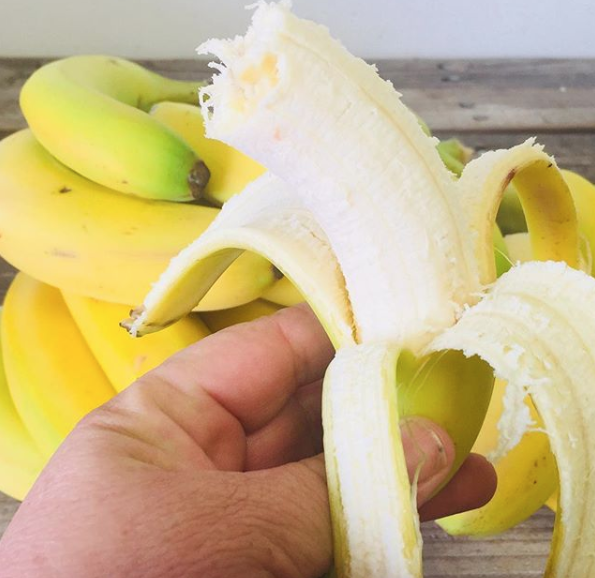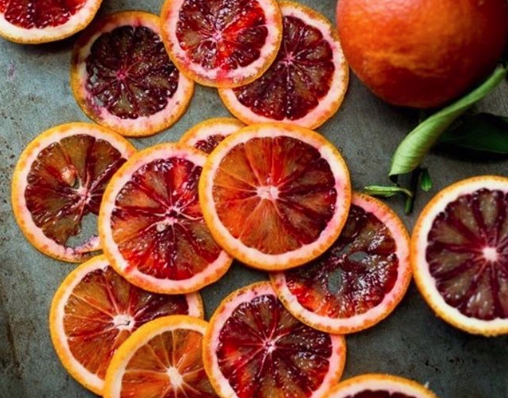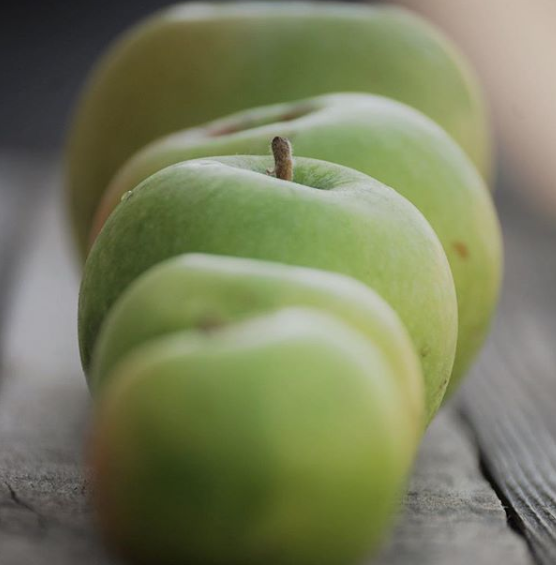Stressing out trying to figure out how to use your leftover fruits and veggies? These tips will help!
You have your weekly groceries or your Daily Harvest FarmBox. You’ve done a pretty good job of working you’re way through all the fresh fruits and veggies, but you weren’t able to eat at home as much this week as you’d planned, and now you have a pile of fruit and veggies you know are going to go bad soon.

Do you love fresh organic bananas? Wait until you crunch into a banana chip made with only a single ingredient: dehydrated bananas.
What to do?
You’re a healthy eater. You also care about your pocketbook and the environment, so you don’t want to let all that beautiful food that farmers worked so hard to grow go into your trashcan. (Sad fact: 50% of the food farmers grow in the US ends up in the trash!)
The worst case scenario — if the food is too far gone to salvage — is to make compost or worm castings with it. At least that way, the food can be used to grow more food, or to make your houseplants happy.
Here’s a neat video from University of Maine showing you how to easily turn food scraps and food waste into worm castings at home:
Again, converting food waste back into soil is the worst case scenario. What about the best case scenario? How about turning it into delicious food for you that can be stored for the future?
Just because you can’t eat five peaches, four potatoes, a bag of kale, and six bananas right now doesn’t mean you can’t work some magic to convert them into food for later…
12 Tips to Use Your Leftover Fruits and Veggies
We’ve made sure that our “12 tips to use your leftover fruits and veggies” only require standard kitchen equipment almost anyone is going to have at home, such as a pot or a blender. Only a couple of the tips (where noted) require anything fancy like a dehydrator.
If you see an idea you like from the list below but you’re not quite certain how to make it, simply google it + the specific type of fruit or veggie you’ve got handy and you’ll be amazed at how many recipes & how-to’s you’ll find on the web.
Tips to use your leftover FRUIT:
-
- Citrus water – Doesn’t get much simpler than this. Slice your citrus and toss it into a pitcher of water in your fridge. Citrus infused ice cold water is a life-saver on a hot day or after a workout.
- Fruit Popsicles – Hey, kids aren’t the only ones who can eat popsicles. Unlike grocery store popsicles, you can make sure your homemade popsicles aren’t loaded with extra sugar. You can also blend virtually any fruit together and it will still taste great. Banana-blackberry-peach popsicles? Yep, tastes good. Strawberry-mango-apricot? Oh yeah! Simply throw your fruit into a blender, taste it (add a little honey if you need more sweet), then pour them into your popsicle molds. Popsicles will last for many months. (We’re not embarrassed to say we’ve eaten year-old popsicles that were lost in the back of the freezer, and they still tasted great.)
- Fruit smoothie – Just as with popsicles, fruit smoothies are ridiculously easy to make and can use any fruit you have laying around. Want to round out the fruit and turn your smoothie into a full meal? Add extra ingredients like nut butter, your favorite protein powder, cacao powder, chia seeds, oats, etc.
- Fruit chips – If you have a dehydrator, you’ll be amazed at how easy it is to make dehydrated fruit chips (apples, apricots, peaches, strawberries, pears, bananas, etc) — and you’ll be equally amazed at how good they taste. Our personal fave? Banana chips. You’d swear they were candy, instead of a single ingredient fruit chip. Warning here: since 75% – 95% of fruit is water content, fruit chips can be deceptive. Ten apple chips might not seem like that much food, but you actually just ate a whole apple that’s going to rehydrate in your belly! Only pull out a few fruit chips from your stash BEFORE you eat them, rather than sitting down with a bag of fruit chips while binge watching a Netflix series. Otherwise you’ll also end up binge eating an entire produce aisle’s worth of fruit in a single night. (We may or may not know about this from personal experience.)
- Fruit roll-ups – A dehydrator helps for this one too, although you can make them in an oven. Cook the fruit then strain it (if you’re using seedy fruit like blackberries), then pour on wax paper sheets in your dehydrator. Simply delicious and kids will go crazy for them.
- Fruit cubes (for something later) – Feeling lazy? Simply cut your leftover fruit into chunks, and put it in the freezer in labelled ziplock bags. Later, when you have more time, you can add these frozen fruit chunks to a smoothie, make a pie, preserves, or add them to breakfast oatmeal.
- Yonana “icecream” – There is an amazing contraption called a Yonana that turns fruit into ice cream with the click of a button. As the name implies, it was invented with bananas in mind, but it works with frozen chunks of any fruit (including your fruit cubes from #6). No extra sugar needed.

Cold, crisp citrus water: a delightfully refreshing thirst-quencher.

You can turn a pile of fruit into a small bag of fruit chips that will last for months using a dehydrator.
Tips to use your leftover VEGGIES:
-
- Veggie Stock – What do potato skins, onions skins, carrot peels, broccoli stems, and even perfectly good veggies that you simply won’t be able to eat before they go bad all have in common? They can be used to make delicious veggie stock. Keep a large ziplock bag in your freezer and store all your veggie trimmings in them. Whenever the bag gets full, make veggie stock. This can be used as a soup base, a base for sauces, a flavoring in rice, or countless other ways. Store in the fridge or freezer and bring it out whenever you need it.
- Pureed veggie soup – If you’ve ever had pureed cauliflower soup, you know how delicious pureed veggie soup can be. But almost any other veggie can also be used to make an amazing pureed soup. A jar of veggie soup makes an awesome lunch.
- Veggie Casserole – Google whatever veggie you’re trying to use + the word “casserole,” and you’ll wish the internet had been around back when your mom was making you dinner casserole when you were a kid. There are infinite numbers of delicious veggie casseroles out there to explore. Yes, you can also add meat or cheese if you’d like, just try to get it from a local, humane farm! (Ahem, we can help you with the eggs and cheese.)
- Crisps or chips – Ok, potatoes are more of a starch than a veggie, but still… Sweet potatoes and white potatoes both make awesome oven chips. So does kale, beets, carrots, and zucchini. Use your Googler, and behold. Veggie chips will also last for a few days, but when you taste them, they might not last past one meal.
- Lacto-fermented “veggie pickles” – When you think “pickles” you probably think cucumbers. Well, if you’ve been to a nice restaurant recently, you’ve probably noticed that pickling all manner of veggies is trendy these days – and rightfully so. Lacto-fermented veggies are an amazing probiotic that actually make your veggies even healthier than they are when raw or cooked. Best of all, lacto-fermentation is ridiculously easy. All you need is a) good vinegar, sea salt and water to make a brine, and b) a jar and a fridge to store your lacto-fermented veggie pickles in. Other than delicate greens such as lettuce and chicory, you can lacto-ferment virtually any veggie from squash to beets to carrots. Fancy up your veggie pickles with garlic, dill, turmeric, ginger, and other herbs & spices. Lacto-fermented veggies will store for many months in your fridge!

What’s the secret to delicious soups, ramen, stews, and sauces? A good veggie stock.
We hope these 12 tips to use your leftover fruits and veggies save you money, tickle your taste buds, and keep more food out of our landfills. Enjoy!
Order Now!
Get your Daily Harvest Express order placed right now (or no later than Sunday evening at 5 pm) so you can enjoy another week of fresh, healthy organic food from local farmers!
If you’re an existing customer, check out the What’s In My Box page to see what’s headed your way or to customize your order. If you’re a new customer, learn more about which service is best for you by clicking the button below:
Order NowWant to get more articles like this?
Subscribe to our weekly newsletter to get more local food & farming news from Daily Harvest Express!




